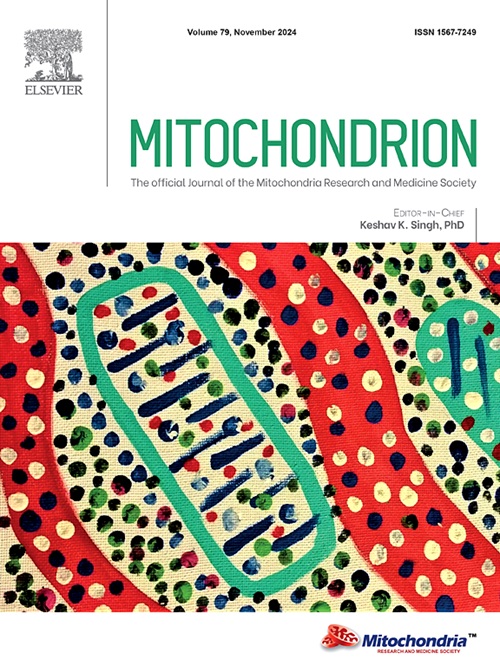模仿单个大规模缺失的遗传性 mtDNA 重排,与 MIDD 和原发性心脏病表型相关。
IF 4.5
3区 生物学
Q2 CELL BIOLOGY
引用次数: 0
摘要
目的:在一个以前未解决的谱系中,确定遗传原因,母亲和两个女儿患有扩张性心肌病,伴有普遍的心律失常负担,与糖尿病和感音神经性听力损失有关,没有明确的进行性外眼麻痹的证据。方法:多年来进行了多项基因检测,包括单基因测序、线粒体DNA (mtDNA)测序、线粒体疾病和心肌病的NGS面板、临床外显子组测序和全外显子组测序。特异性扩增和长读NGS用于评估mtDNA结构改变。结果:通过全外显子组测序,我们在所有患病家族成员的mtDNA中发现了一个新的异质12 kb长的单缺失,并通过远程PCR证实。然而,NGS的一项更深入的调查显示,确实存在由野生型和缺失分子组成的重排mtDNA物种。这种mtDNA复制在我们的谱系中被证明是遗传的,并存在于所有测试样本中。结论:虽然mtDNA单次大规模缺失通常被认为是零星的,但很少有古老的报道描述了母系遗传的mtDNA重复。我们建议,在线粒体表型异常的家族性病例中,mtDNA大规模重排应被认为是可能的疾病原因。长读测序对于检测这些变异,特别是mtDNA重复是有用的。本文章由计算机程序翻译,如有差异,请以英文原文为准。
An inherited mtDNA rearrangement, mimicking a single large-scale deletion, associated with MIDD and a primary cardiological phenotype
Aim
To identify the genetic cause in a previously unsolved pedigree, with mother and two daughters suffering of dilated cardiomyopathy with prevailing arrhythmic burden associated with diabetes mellitus and sensorineural hearing loss, without clear evidence of progressive external ophthalmoplegia.
Methods
Several genetic tests were performed over the years including single-gene sequencing, mitochondrial DNA (mtDNA) sequencing, NGS panel for mitochondrial diseases and cardiomyopathies, clinical exome sequencing and whole exome sequencing. Specific amplifications and long-read NGS were used to evaluate mtDNA structural alterations.
Results
By means of whole exome sequencing we found a novel heteroplasmic 12 kb-long single deletion in the mtDNA in all affected family members, confirmed by long-range PCR. However, a deeper investigation by long-read NGS revealed indeed the presence of rearranged mtDNA species, formed by a wild-type plus a deleted molecule. This mtDNA duplication turned out to be inherited in our pedigree and present in all tested specimens.
Conclusion
While mtDNA single large-scale deletions are generally considered sporadic, few old reports described maternally inherited mtDNA duplication We suggest that mtDNA large rearrangements should be considered as possible disease causes in familial cases with unusual mitochondrial phenotypes. Long-read sequencing is useful for the detection of these variants, particularly mtDNA duplications.
求助全文
通过发布文献求助,成功后即可免费获取论文全文。
去求助
来源期刊

Mitochondrion
生物-细胞生物学
CiteScore
9.40
自引率
4.50%
发文量
86
审稿时长
13.6 weeks
期刊介绍:
Mitochondrion is a definitive, high profile, peer-reviewed international research journal. The scope of Mitochondrion is broad, reporting on basic science of mitochondria from all organisms and from basic research to pathology and clinical aspects of mitochondrial diseases. The journal welcomes original contributions from investigators working in diverse sub-disciplines such as evolution, biophysics, biochemistry, molecular and cell biology, genetics, pharmacology, toxicology, forensic science, programmed cell death, aging, cancer and clinical features of mitochondrial diseases.
 求助内容:
求助内容: 应助结果提醒方式:
应助结果提醒方式:


